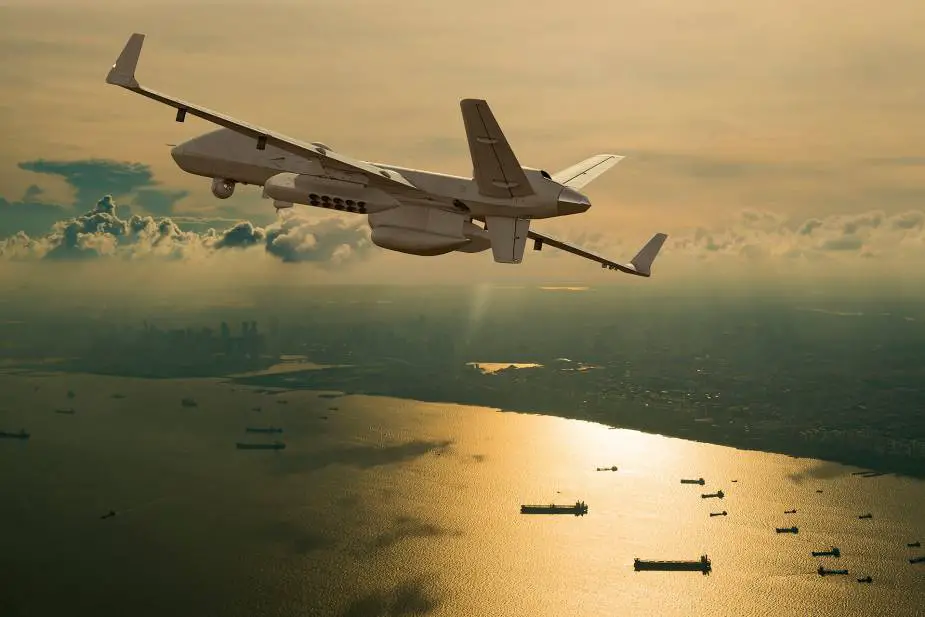Breaking news
Taiwan Defense buys 4 General Atomics MQ-9B SeaGuardian UAVs.
As written by Keoni Everington in Taiwan News on August 31, Taiwan has officially signed a procurement contract with the U.S. to purchase four MQ-9B SeaGuardian unmanned aerial vehicles (UAVs) for NT$16.88 billion (USD555 million).
Follow Air Recognition on Google News at this link
 MQ-9B SeaGuardian (Picture source: General Atomics)
MQ-9B SeaGuardian (Picture source: General Atomics)
Democratic Progressive Party (DPP) Legislator Wang Ting-yu on his Facebook page at 9:37 a.m. on Wednesday, August 31, announced that after intensive discussions between Taiwan and the U.S., the Ministry of Defense's latest procurement award announcement states that the Taiwanese Air Force Command Headquarters invited a military delegation from the U.S. to sign a formal procurement contract for four MQ-9B SeaGuardian UAVs at the American Institute in Taiwan, Keoni Everington writes. The contract went into effect on Aug. 24 and will continue to the end of 2029, with the first drone to arrive in Taiwan in 2025. The NT$16.88 billion price tag includes four SeaGardian UAVs and ground control station-related equipment and support systems.
The location listed in the contract where the drones will be stationed is Hualien County. The total cost for the drones will eventually come to NT$21.7 billion with the remaining costs coming from the construction of related systems in Taiwan, new buildings for ground control stations, support equipment education and training, and procurement operations.
General Atomics MQ-9B SeGuardian
A navalized MQ-9 Reaper, named Mariner, was proposed for the U.S. Navy's Broad Area Maritime Surveillance (BAMS) program. It had an increased fuel capacity for an endurance of up to 49 hours. Variations included one for aircraft carrier operations with folding wings for storage, shortened, reinforced landing gear, an arresting hook, cut-down or eliminated ventral flight surfaces and six stores pylons for a total load of 3,000 pounds (1,360 kg). The Northrop Grumman RQ-4N was selected as the BAMS winner.
US Customs and Border Protection (CBP) operates two maritime variants of the MQ-9, known as Guardians. The U.S. Coast Guard evaluated the Guardian, including performing joint operations with CBP. CBP and the Coast Guard operate one MQ-9 Guardian jointly out of land-based stations in Florida and Texas.
General Atomics continued with the Naval Reaper concept, turning it into the SeaGuardian. It has an endurance of more than 18 hours and can mount an eight-hour patrol at a radius of 1,200 nmi (1,400 mi; 2,200 km). A key part of its mission set is the Leonardo Seaspray 7500E V2 AESA radar mounted as a centerline pod with inverse synthetic aperture radar that can spot surface targets including ships, submarine periscopes, and people during search and rescue operations.
General Atomics studied testing a sonobuoy launch capability from the Guardian in 2016 to demonstrate its ability to carry them, control them, and send information back to the ground station over a SATCOM link. In November 2020, a company-owned Reaper carried out a trial releasing sonobuoys, then processing information from them to track a training target. This led to the creation of an anti-submarine warfare package for the SeaGuardian, the first self-contained ASW package for a UAS. The package comprises podded sonobuoy dispenser systems (SDS), using a pneumatic launch system to launch 10 A-size or 20 G-size buoys from each pod, and a sonobuoy management and control system (SMCS); the aircraft can carry up to four pods.



















